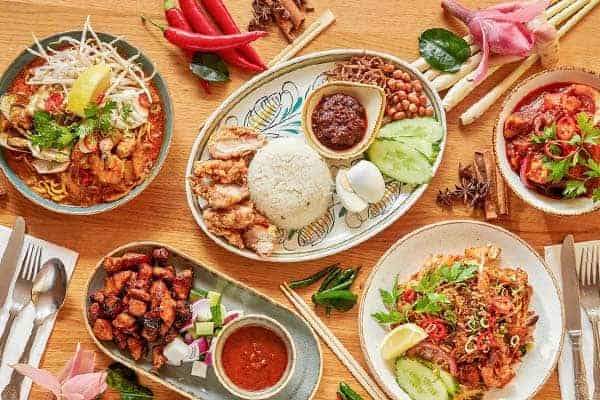Features of a Good Malaysian Food Restaurant
Hello dear parents!
Fill your family days out with mouth-watering cuisine from the heart of Malaysia! Food is a significant part of Malaysian culture, offering a delightful combination of flavors, spices, and cooking styles that promise an epic culinary journey. This guide will unveil the allure of Malaysian food restaurants, provide invaluable tips for identifying the best ones, and help you select the ideal spot for your family.
Understanding Malaysian Cuisine
What is Malaysian Cuisine?
Malaysian cuisine is a remarkable fusion of traditional Malay, Chinese, and Indian culinary influences, with sprinkles of Thai, Indonesian, and even British flavors. One dining experience opens doors to a world of delightful tastes and dishes. From spicy curries and jellies to refreshing drinks and savory rice, Malaysian food is all about variety and uniqueness.
Why Choose Malaysian Cuisine for Your Family?
Family meals are all about diversity, excitement, and, most importantly, nutritional balance. Malaysian cuisine is rich in diverse ingredients consisting of healthy proteins, carbohydrates, and essential nutrients. Additionally, it combines great taste and health—a perfect combination to keep your little ones happy while ensuring they are well-nourished.
Selecting a Great Malaysian Food Restaurant
Restaurant Authenticity
The first step towards an incredible Malaysian dining experience is choosing an authentic restaurant. An authentic Malaysian food restaurant uses traditional recipes and ingredients. Keep an eye out for menu items like Nasi Lemak (creamy rice), Char Kuey Teow (stir-fried rice cake strips), Roti Canai (flatbread), and Teh Tarik (milk tea). These are staple dishes that signal authenticity.
Friendly and Kid-Appropriate Environment
As parents, we understand the importance of a friendly and accommodating environment, especially when dining with kids. Look for restaurants with areas dedicated to kids and those that provide coloring books, crayons, and other goodies to keep your children engaged while you enjoy your meal.
User Reviews
A tried and trusted method for discovering great restaurants nowadays is reviewing customer feedback online. Previous customer experiences can provide valuable insights into the restaurant’s quality of food, service, and overall ambience.
Navigating the Menu for Kids
Malaysian dishes range from mild to incredibly spicy. As such, it’s essential to look for kid-friendly dishes that offer a balance of taste and nutrition without being overly spicy.
With just a little planning and understanding, eating out at a Malaysian food restaurant can be a joyful cultural experience and a gastronomic adventure for your whole family! Let the culinary journey begin!

Healthy Options in a Malaysian Food Restaurant
Appetizers
Discover the wonders of satay – grilled chicken, beef or lamb skewers served with scrumptiously nutty peanut sauce. They are the perfect starters for your dining experience.
Main Courses
For the mains, try Mee Goreng (stir-fried noodles), packed with fresh vegetables and lean proteins. If your child is an adventurous eater, the tangy chicken or lamb rendang, slow-cooked in coconut milk and spices, is an appealing choice. Be sure to specify the spice level when ordering.
Beverages and Desserts
Wrap up your family’s dining adventure with refreshing traditional drinks such as Bandung (rose syrup with milk) or Cendol (iced dessert with green rice flour jelly, coconut milk, and palm sugar).
Conclusion
In a nutshell, Malaysian Food restaurant is indeed an exciting adventure to embark upon. Sampling this diverse and healthy cuisine can make your family meals delightful, nutritional, and perfect for bonding. Step out, trust your instincts as a parent, and enjoy the culinary journey with your loved ones! Bon Appétit, or as they say in Malaysia, Selamat Makan!
Preparing for Malaysian Food Restaurant: 5 Essential Tips for Parents
Malaysian cuisine offers an exotic taste adventure that can excite every palate. As parents, allowing your children to savor these unique blends of flavors can be quite fun and educational. However, it’s crucial to prepare beforehand. Here are five essential things parents should know.
1. Understand the Menu
Firstly, do some research about Malaysian food. It’s a delightful mix of Malay, Chinese, and Indian cuisines. Common ingredients include rice, noodles, fish, and a wide variety of herbs and spices. Dishes can be spicy, but options are also available for milder tastes.
2. Manage the Heat
Malaysian food can be spicy, but don’t let this deter you. When ordering, we advise parents to ask for their dishes to be made less spicy, or request for the chili to be served on the side so they can control the heat level for their children.
3. Explore Various Flavors
The beauty of Malaysian cuisine lies in its diversity. Don’t fear straying away from the usual dishes. Encourage your children to try a variety of dishes, such as Nasi Lemak (fragrant rice dish cooked in coconut milk), Roti Canai (type of Indian-influenced flatbread), or even Satay (grilled skewered meat).
4. Make it Educational
Use this culinary experience as an educational tool for your children. Talk to them about the multi-cultural influences on Malaysian cuisine, the different ingredients and how the foods are prepared.
5. Observe the Dietary Restrictions
Lastly, be aware of your family’s dietary restrictions before heading out. Thankfully, Malaysian cuisine has plenty to offer for vegetarians, gluten-free diets, and other dietary needs. Just ensure to communicate this clearly to the restaurant staff.
By understanding the menu, managing the spice level, exploring diverse flavors, making the outing educational, and observing dietary restrictions, parents can ensure an enjoyable and enriching Malaysian restaurant experience for their children.
For more great articles please see here. For more information see here
Disclaimer
The articles available via our website provide general information only and we strongly urge readers to exercise caution and conduct their own thorough research and fact-checking. The information presented should not be taken as absolute truth, and, to the maximum extent permitted by law, we will not be held liable for any inaccuracies or errors in the content. It is essential for individuals to independently verify and validate the information before making any decisions or taking any actions based on the articles.




